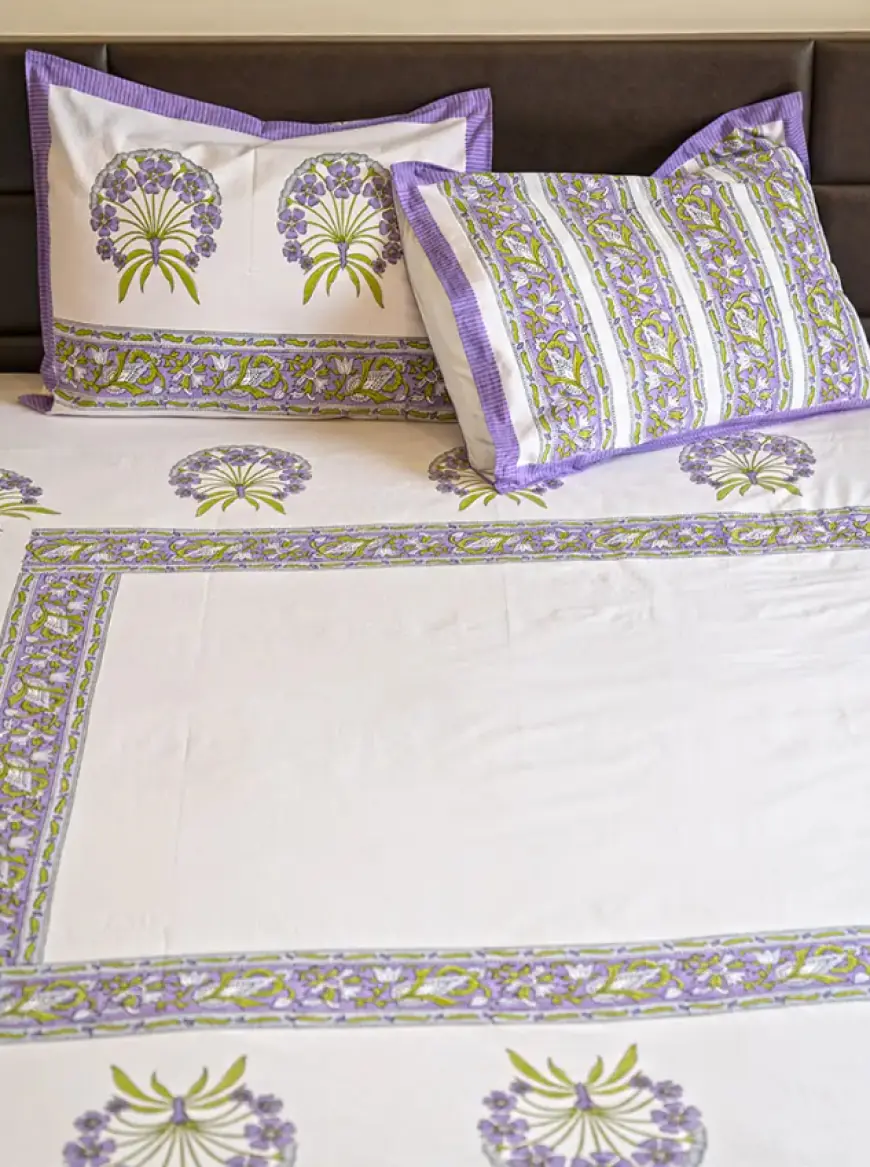How to Choose Block Print Fabric Based on Climate and Comfort

Block printing has long been admired not only for its beauty but also for its connection to tradition, sustainability, and comfort. As climate becomes an increasingly important factor in fashion choices, choosing the right block print fabric based on weather and personal comfort has never been more essential. Whether you're dressing for summer heat or layering up for cooler months, the right fabric can transform your wardrobe experience.
Let’s explore how to select the most suitable block-printed textiles for every season and how to balance aesthetics with breathability and coziness.
Understanding Block Print Fabrics: What Makes Them Unique?
Block print fabrics are made using hand-carved wooden blocks dipped in natural or pigment dyes. Each impression on the fabric is manually stamped, making every piece a unique work of art. But beyond aesthetics, what sets block print fabric apart is its use of natural fibers like cotton, mulmul, silk, and linen—each offering different levels of breathability, warmth, and durability.
Most block-printed garments are crafted with eco-conscious materials and dyes, making them not only stylish but also environmentally responsible. As we shift towards climate-conscious living, choosing the right block print textile based on your local weather helps you stay both fashionable and comfortable.
Summer Essentials: Light, Airy, and Breathable Choices
When temperatures soar, your top priority is staying cool. Opt for lightweight and breathable block print fabric varieties like cotton or mulmul. Cotton block prints are highly absorbent, soft on the skin, and allow air circulation, making them ideal for hot and humid climates.
Mulmul, a finer weave of cotton, feels even softer and gives a luxurious drape. Dresses, kurtis, skirts, and scarves made from cotton or mulmul block prints are perfect for casual summer wear. The natural dyes used in these prints also help in keeping the fabric non-irritating during sweating.
For day-to-day summer dressing, choose lighter shades with floral or geometric patterns in breathable fabrics. Not only does this ensure comfort, but it also keeps your wardrobe looking seasonally fresh and stylish.
Monsoon and Humid Weather: Quick-Drying and Easy Care
In tropical or coastal areas where monsoon and humidity dominate the climate, comfort means more than just breathability—it means easy maintenance. Block print fabric made of cotton voile or cambric is an excellent option here. These fabrics are not only lightweight but also quick-drying, helping avoid that damp, sticky feeling.
During humid months, avoid heavier fabrics like silk or wool blends as they tend to hold moisture and become uncomfortable. Instead, opt for short kurtas, palazzos, and cotton tunics in fun, vibrant prints that complement the monsoon mood.
Moreover, block prints in darker colors and busier patterns are great for monsoon wear as they hide occasional water splashes or mud stains better than plain fabrics.
Winter Layers: Warmth Meets Style with Heavier Fabrics
As temperatures drop, comfort takes a cozy turn. For colder climates, choose block print fabric options made from heavier materials like silk, wool blends, or layered cotton. Hand block-printed khadi cotton or cotton-silk mixes offer warmth without compromising on elegance.
These materials retain body heat better while still maintaining the traditional look of hand-printed designs. Layered jackets, long dresses, and printed scarves in darker hues not only add richness to your outfit but also keep you snug. Pair these with solid winter basics to elevate your style during chilly months.
While shopping for winter block prints, look for products that include lining or layering, so you can enjoy the aesthetic without compromising on warmth.
Transitional Seasons: Versatile and All-Day Comfortable
Spring and autumn bring unpredictable temperatures, and your wardrobe needs to adapt accordingly. In these seasons, go for mid-weight block print fabric options like linen-cotton blends or handloom cotton. These provide just the right amount of warmth in the mornings and breathability during sunny afternoons.
These versatile fabrics are ideal for shirts, tunics, and trousers that can be easily paired with a light jacket or scarf. Additionally, pastel prints or traditional motifs in neutral colors work well across changing seasons and occasions.
The key to dressing during transitional weather is layering. A simple block print cotton kurta can be dressed up with a woolen shawl in the morning and worn solo by afternoon.
Choosing the Right Fabric for Your Lifestyle
While climate plays a significant role in selecting block print fabric, lifestyle factors matter too. Are you mostly indoors with air conditioning? Do you commute daily in public transport? Is your wardrobe more work-focused or casual?
For example, professionals who spend hours in cooled environments may prefer layered outfits using slightly heavier fabrics, even in summer. Meanwhile, people on the go might opt for light, breathable, and low-maintenance options.
Additionally, if you have sensitive skin, always go for natural-dye, organic cotton prints to avoid allergic reactions and irritation. Always check the washing instructions to ensure the fabric’s longevity and continued comfort.
Final Thoughts
Block print fabric is not just a piece of clothing—it's a celebration of craftsmanship, culture, and climate-conscious living. By understanding how each fabric behaves in different weather conditions, you can build a wardrobe that is both practical and beautiful year-round.
Whether you're braving the heat, enjoying a breezy spring afternoon, or cozying up in winter, there's a block print fabric waiting to complement your comfort and style.
What's Your Reaction?
 Like
0
Like
0
 Dislike
0
Dislike
0
 Love
0
Love
0
 Funny
0
Funny
0
 Angry
0
Angry
0
 Sad
0
Sad
0
 Wow
0
Wow
0
















































